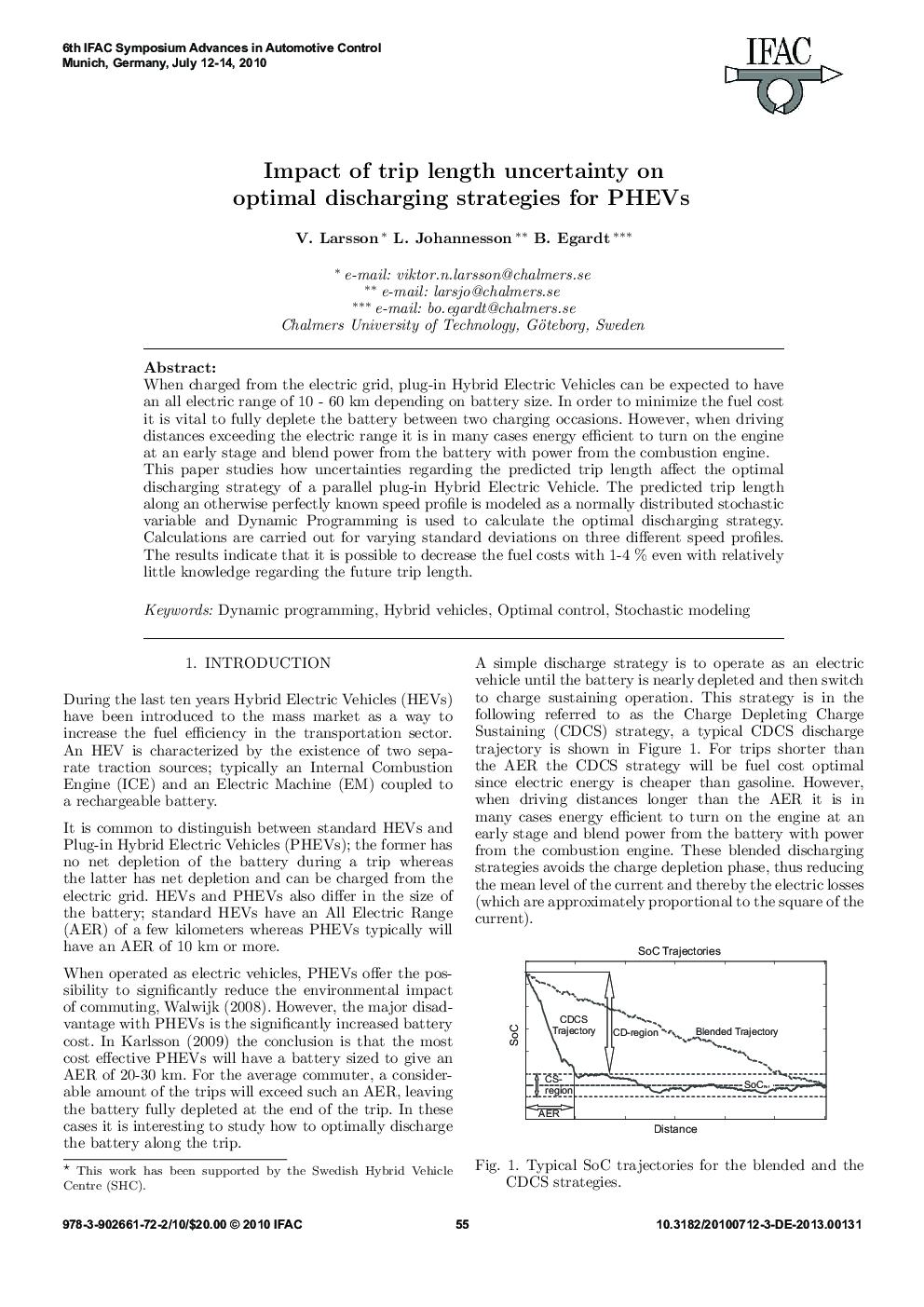| Article ID | Journal | Published Year | Pages | File Type |
|---|---|---|---|---|
| 719867 | IFAC Proceedings Volumes | 2010 | 6 Pages |
When charged from the electric grid, plug-in Hybrid Electric Vehicles can be expected to have an all electric range of 10 - 60 km depending on battery size. In order to minimize the fuel cost it is vital to fully deplete the battery between two charging occasions. However, when driving distances exceeding the electric range it is in many cases energy efficient to turn on the engine at an early stage and blend power from the battery with power from the combustion engine. This paper studies how uncertainties regarding the predicted trip length affect the optimal discharging strategy of a parallel plug-in Hybrid Electric Vehicle. The predicted trip length along an otherwise perfectly known speed profile is modeled as a normally distributed stochastic variable and Dynamic Programming is used to calculate the optimal discharging strategy. Calculations are carried out for varying standard deviations on three different speed profiles. The results indicate that it is possible to decrease the fuel costs with 1-4 % even with relatively little knowledge regarding the future trip length.
